Mars Ice Home: A Red Planet Colony Concept in Pictures
Mars Ice Home
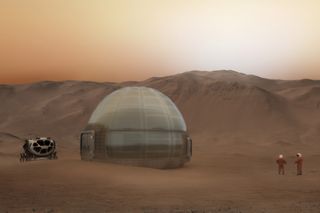
Future colonists stand outside the Mars Ice Home, which was designed as part of a feasibility study at NASA Langley Research Center in 2016 in collaboratioon with SEArch+ and CloudsAO. The home uses water-ice to protect against radiation and for structural support. It also has an inflatable membrane. The ice additionally helps with insulation alongside a layer of carbon dioxide which can be extracted from the Martian atmosphere.
Inside the Ice Home
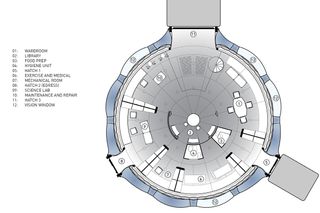
Taking a look at the layout for the Mars Ice Home, different rooms and facilities are labeled here. The domed structure includes everything from a library to a science lab and a number of hatches. It also includes a window so future colonists on the Red Planet can see the dusty surface from indoors.
Ice Home Amenities
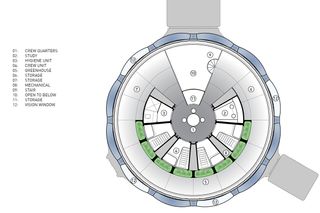
Inside the Mars Ice Home, theoretical future colonists might find a number of amenities. The domed structure has more than one level so, in addition to stairs, it features storage, windows to see out, and even a greenhouse.
Caring for Martian Astronauts

In order for future crewed missions to survive life on the Red Planet, there are a number of safety features that must be in place in the structures that they stay in. The Mars Ice Home ensures the safety and comfort of these brave astronauts by including a hygiene unit, an airlock, and plenty of room in the crew quarters.
Layers of the Mars Ice Home

The many layers of the Mars Ice Home ensure that future residents on the Red Planet will be safe from the dangers that the planet presents. The structure maintains a safe atmospheric pressure and will protect astronauts from harmful radiation and the dust storms that happen frequently on the planet.
Structural Details of the Mars Ice Home
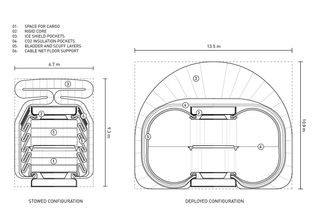
A fully-functional living space, the Mars Ice Home has designated cargo space, a rigid core, and floor support. While a non-traditional living space as far as Earth-dwellings are concerned, the Mars Ice Home is uniquely designed to support humans on Mars.
Crew Quarters
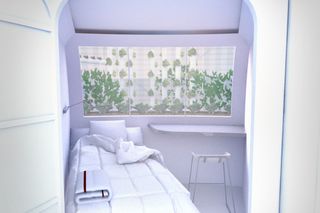
There are comfortable quarters for the crew who would inhabit the Mars Ice Home. Equipped with a bed and a desk, each "room" is fairly spacious (at least as far as astronaut sleeping arrangements are concerned). The rooms are simply designed, but brightly lit and made for comfort and utility.
Get the Space.com Newsletter
Breaking space news, the latest updates on rocket launches, skywatching events and more!
A Martian Greenhouse
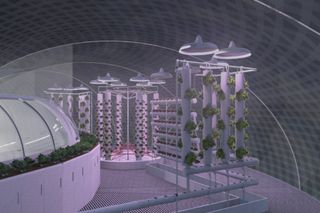
There is a greenhouse within the Mars Ice Home. Likely using hydroponic growing techniques, future colonists will be able to not only experiment with growing food and plant-life on Mars, they will also be able to sustain for longer periods of time on the planet through modern agriculture within the structure.
Crew Quarters at Night
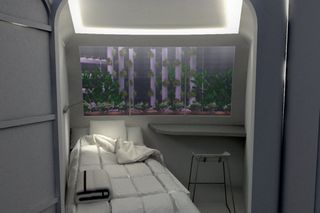
At night, astronauts have access to nighttime lighting in their quarters. Rooms may also have hydroponic plant systems within them, which are not ony functional, they also add a bright and cheery pop of color and reminder of home to the room.
Arriving at the Mars Ice Home
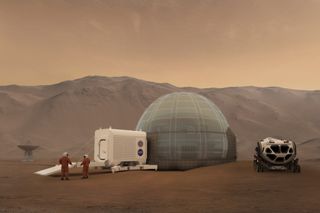
A vehicle rests outside of the Mars Ice Home. Nearby, two human colonists stand in protective suits and helmnets. The Mars Ice Home provides support and comfort for human settlers on the Red Planet.
The Mars Ice Home at Night
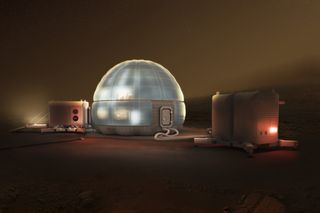
This stunning artistic visualization shows what the Mars Ice Home would look like at night on the Red Planet. With stars just visible in the background, the structure is illuminated by the lights inside.
Join our Space Forums to keep talking space on the latest missions, night sky and more! And if you have a news tip, correction or comment, let us know at: community@space.com.

Chelsea “Foxanne” Gohd joined Space.com in 2018 and is now a Senior Writer, writing about everything from climate change to planetary science and human spaceflight in both articles and on-camera in videos. With a degree in Public Health and biological sciences, Chelsea has written and worked for institutions including the American Museum of Natural History, Scientific American, Discover Magazine Blog, Astronomy Magazine and Live Science. When not writing, editing or filming something space-y, Chelsea "Foxanne" Gohd is writing music and performing as Foxanne, even launching a song to space in 2021 with Inspiration4. You can follow her on Twitter @chelsea_gohd and @foxannemusic.
